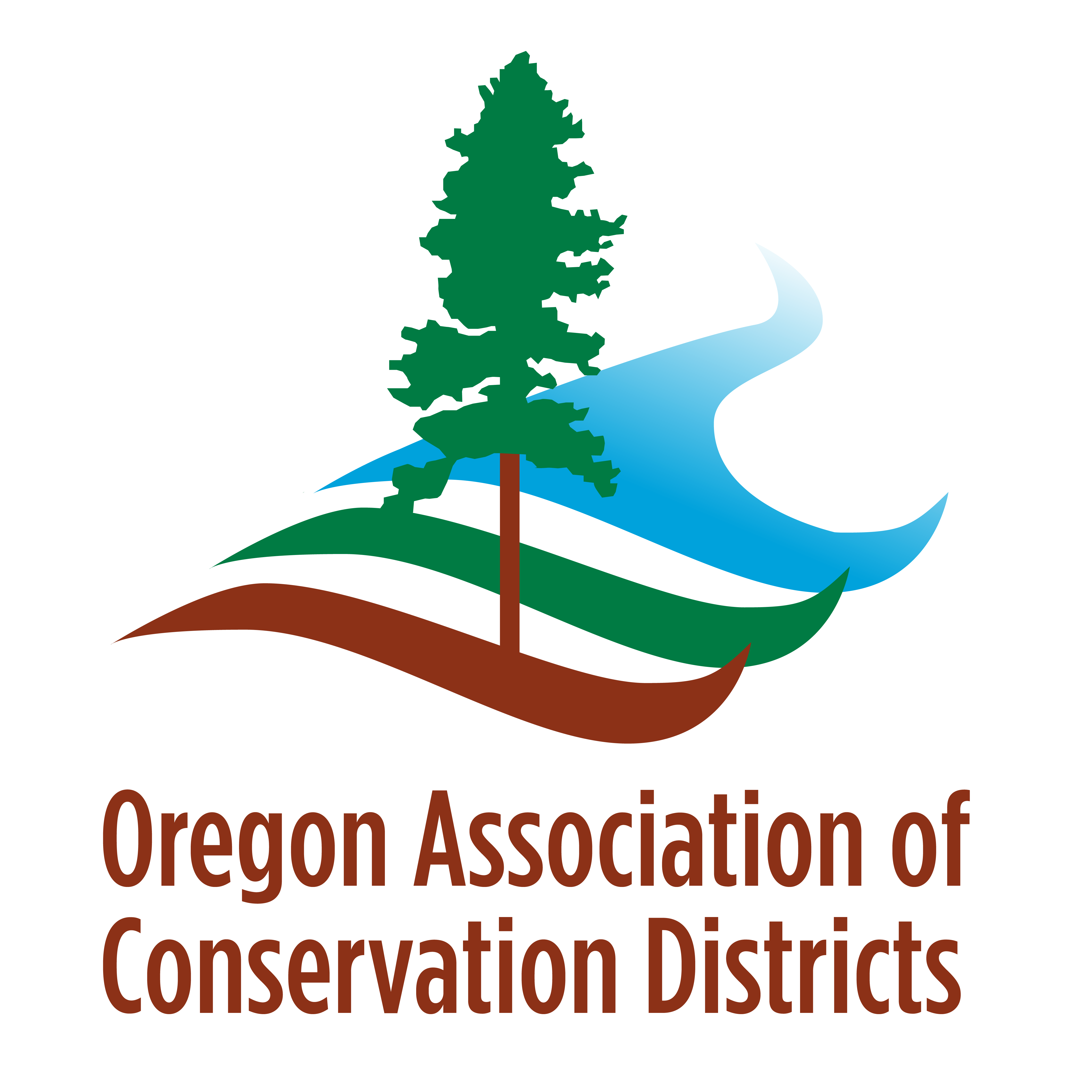What is an SWCD?
SWCD stands for Soil and Water Conservation District, which is a type of local government entity called a special district, governed by elected directors. SWCDs work with private landowners and other partners on a voluntary basis to address locally identified resource concerns.
Oregon’s SWCDs work in both urban and rural areas, and provide services such as:
- Conservation services
- Technical assistance
- Financial assistance
- Conservation educational and outreach
SWCDs work covers a variety of areas; focus areas may differ depending upon the region of Oregon and whether the individual district has a tax levy (15 districts have passed tax levies). SWCDs work on issues such as:
- Water quality
- Soil health
- Habitat and pollinators
- Urban conservation
- Rangeland and forest management
- Fish and wildlife habitat conservation and restoration
- Wildfire resiliency and recovery
- Weeds and invasives
History of SWCDs
The soil conservation movement began in the late 1920’s and early 1930’s in response to the dustbowl era. A large, sustained drought combined with the farming practices of that time created very large wind erosion events that moved topsoil very long distances. One of these storms carried dust 2 miles high and 2,000 miles from the Midwest to Washington, D.C.
In 1935, Congress passed several pieces of legislation that led to the creation the Soil Conservation Service and started a local voluntary system of conservation. In February 1937, President Roosevelt sent letters to every state governor recommending the enactment of soil conservation district legislation. Oregon created SWCDs in 1939, housed within what was then called the Oregon Soil Conservation Committee. The first district formed in Oregon was the South Tillamook Soil Conservation District, organized officially on February 10, 1940. As of 2025, there are 45 districts throughout the state of Oregon, with Douglas, Grant, Josephine, Lake, Lane, and Multnomah Counties having two districts each, and Baker County being served by four districts.
Over time, SWCDs have evolved to deal with agricultural water quality issues, water conservation and irrigation efficiency, fish and wildlife habitat conservation and restoration, and urban conservation issues. SWCDs are still evolving, working on soil health, carbon sequestration, invasive species and other issues impacting the health and sustainability of Oregon’s soil and water.
How do SWCDs accomplish their mission?
SWCDs are the local boots on the ground that fill the niche of providing soil and water conservation services to owners of private lands on a voluntary basis. SWCDs also do conservation work on local, county, state and federally-owned lands. To accomplish our missions, we start by providing educational information on our local resource issues and the programs we have to help address those issues. We do this through various efforts including presentations, annual workshops, tours, field trials, landowner & producer meetings, posting information on our websites and social media accounts, and working one on one with interested landowners and partners.
SWCDs are also known for providing technical assistance to landowners interested in doing a project. We do this by providing staff that are trained on the conservation practice they commonly work with. This technical assistance includes identifying what the resource concerns are on a property and working with the landowner to come up with a plan to address those concerns. That work may include the surveying and engineering of a practice, providing a seeding plan for native grasses, providing a forest stewardship or tree planting plan, designing a rain garden or shoreline planting, providing guidance on if and when to irrigate a crop, and assisting with the development of wildlife habitat. The technical assistance is tailored to the need of each individual landowner and the resource issue they want to address. SWCDs partner with the Natural Resource Conservation Service of USDA to provide program services and trainings. Often, NRCS staff members are housed within SWCD facilities.
To go along with technical assistance, SWCDs also offer financial assistance. We have funding or can help a landowner access funding to help cover the cost of specific practices, and we commonly cost-share between 50%-75% of the cost of an eligible practice. We know conservation isn’t always cheap, and we want to make it easier for you to protect the resources we all rely on!
To sum it up, SWCDs are a locally elected unit of government that workswith private landowners on a voluntary basis to address locally identified resource concerns. We do that by educating and enabling the private landowners we work with. This is accomplished through our educational efforts, by providing technical assistance through trained staff, and offering financial assistance for eligible projects. If you have a concern you would like to address on your property, or if you would like to find out more about your local SWCD and their efforts, give us a call!
